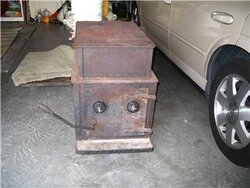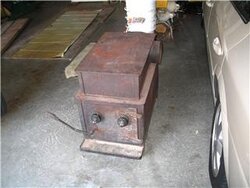Can anyone identify a stove ? It's for sale in my town and I'm thinking about purchasing it. No name or make on the stove. It vents on the side an appears to have a top chamber opend on one end for smoke to flue. Firebrick on bottom and up side 1 row
I tried to post th photos but the size is over the max 350kb.
Is there anyway to post this pics ?
Is there anyone I can email them to who might be able to help ?
Jeff
I tried to post th photos but the size is over the max 350kb.
Is there anyway to post this pics ?
Is there anyone I can email them to who might be able to help ?
Jeff



